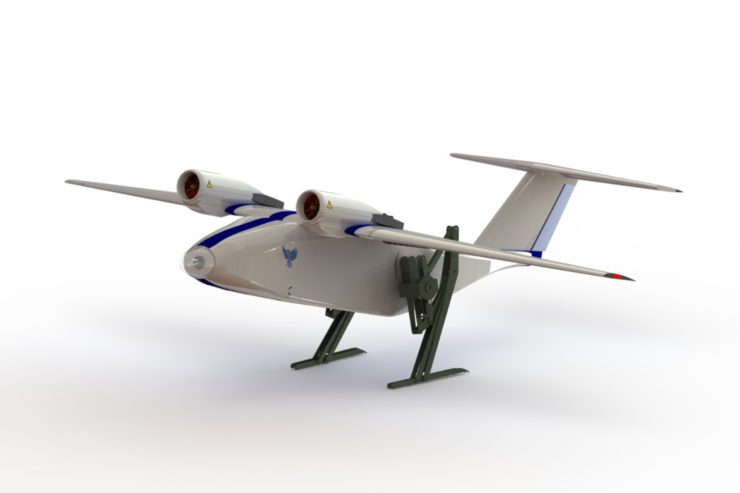
© Passerine
The function of a drone is usually limited by its design. The drones that can deliver heavy payloads over long distances must have fixed wings to give them strength and speed but that means that they are limited in where they can take off from and land. Drones that are designed to take off and land on small areas will require rotors instead of wings as many times there are inefficient “runways” to use.
A number of drone designs have tried new ways of taking off. They feature a combination of fixed wings and rotors. Some are tail-sitters which can take off vertically then fly horizontally, and others have propeller-systems that swivel. These variations work, however they end up increasing the cost, the weight and the complexity of operating them. A startup from South African called Passerine may have come up with the best hybrid yet by designing their craft like its a bird- it uses legs for takeoff and landing. Passerine calls it the Sparrow.
The Sparrow also features fixed wings. They are attached to an airframe which pushes exhaust over the blown wing and the wing flaps to create lift. Designing the Sparrow in this manner allows the craft to lift off even if it has very little forward velocity. The legs act as a catapult that gives the Sparrow 80% of its takeoff energy. This means that it can takeoff from and land on small spaces.
Commercial airliners prefer not to use over-wing engines. They are difficult to maintain because they are high above the ground and the incredible amount of lift that they generate means that if an engine is lost during takeoff or landing, there will be dire consequences. Drones don’t have to worry about these downsides because at the small scale associated with drones so the engines are easy to maintain. Takeoff and landings are still risky but the drones are only carrying cargo so the risk can be taken.
The legs retract into the drone’s fuselage after liftoff. The drone is then able to fly just like a regular fixed-wing craft and it uses its legs in reverse to land. The legs are dropped down slowly and then the drone uses them as shock absorbers to touch down. This system means that Passerine’s Sparrow has the speed, strength, and range of a fixed-wing craft as well as the pinpoint landing abilities of a rotorcraft. The main drawback to using the Sparrow is that it cannot hover. This is only a slight impediment because it is designed for speedy deliveries which do not require the craft to hover.
|